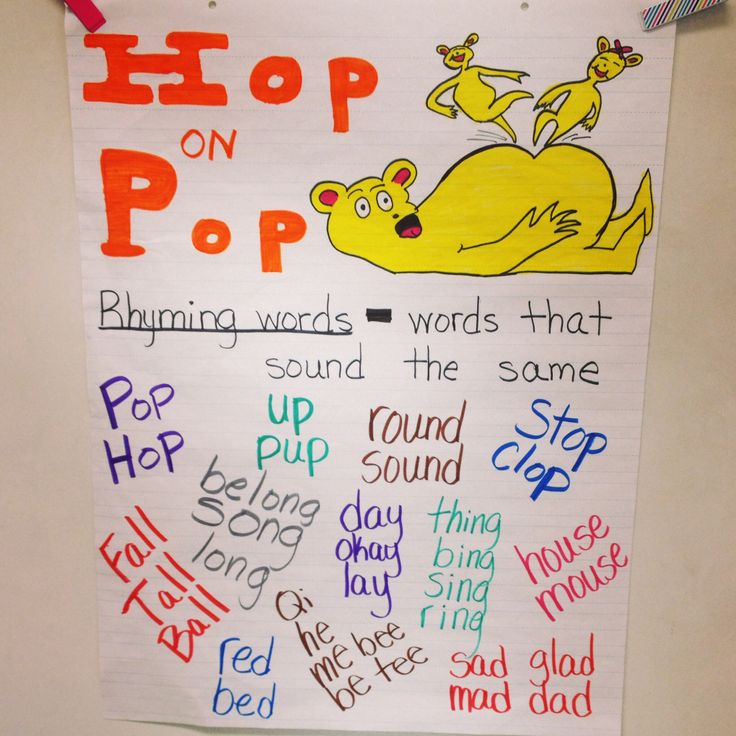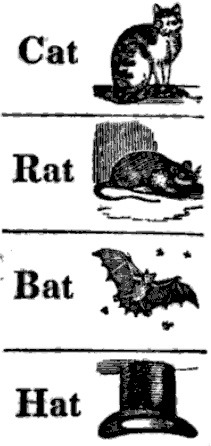RF.K.2.A.ii Produce Rhyming Words
Skill
RF.K.2.A.ii Produce rhyming words
Standard
CCSS.ELA-LITERACY.RF.K.2.A: Recognize and produce rhyming words.
Description
- Mastery: Student is able to produce words that rhyme from the rime (e.g. dime, time; picky, tricky). They can also produce rhyming with words in which the rhymes occurs at the second to the last part of the word (e.g. hallway, say, anyway).
- Acquiring: Student is able to produce similar sounds in oral speech. Student is able to produce which part of the word of the word (rime) is important for rhyming.
Probes
T: Tell me a word that rhymes with moon.
S: spoon
T: What rhymes with rim?
S: [real words] dim, gym, him, Kim, Tim or [nonsense words] bim, fim, lim, mim, nim, pim, sim, vim
T: Tell me two words that rhyme.
S: mat, cat
T: Tell me two words that do not rhyme.
S: bat, ball
Activities and Resources
Small Group Instruction – Direct Instruction
Identifying and Generating Rhyming Words, Body Parts Game (Step 5)
Identifying and Generating Rhyming Words, A Story About Fred
Find the Rhyme
Make a Big Book of Rhymes
Find a Rhyme with the Picture Card. (teacher w/ small group)
During Transitions
Identifying and Generating Rhyming Words, Body Parts Game (Step 5)
Phonics Rhyming Words Video (students listen only, since this is PA)
Reinforce Skills/ Independent Work Time – Independent/Small Group Center Activity
Identifying and Generating Rhyming Words, Body Parts Game (Go to Step 5) Student partners
Match the Rhyme with Pictures (teacher w/ small group)
Display (e.g. anchor chart):
 |
 |
| Source: Printablee |
Source: Tumblr |
Phonological awareness does not refer to print. These images show words; however, you could use only the pictures to focus on the skill of rhyming.
Source: Link
 |
 |
| Source: For The Love of First |
Source: Tot Schooling |
Considerations & Reminders
- Teachers should not present words or complex pictures to students when assessing this skill. Phonological awareness addresses the ability for the student to hear similar sounds in oral speech. Students should not be rhyming with print at this point.
- Rhyming is sometimes confused for alliteration. Teachers should make sure that they use true rhymes in their examples; this makes the concept of rhyming most comprehensible for students.
- Why is rhyming important?